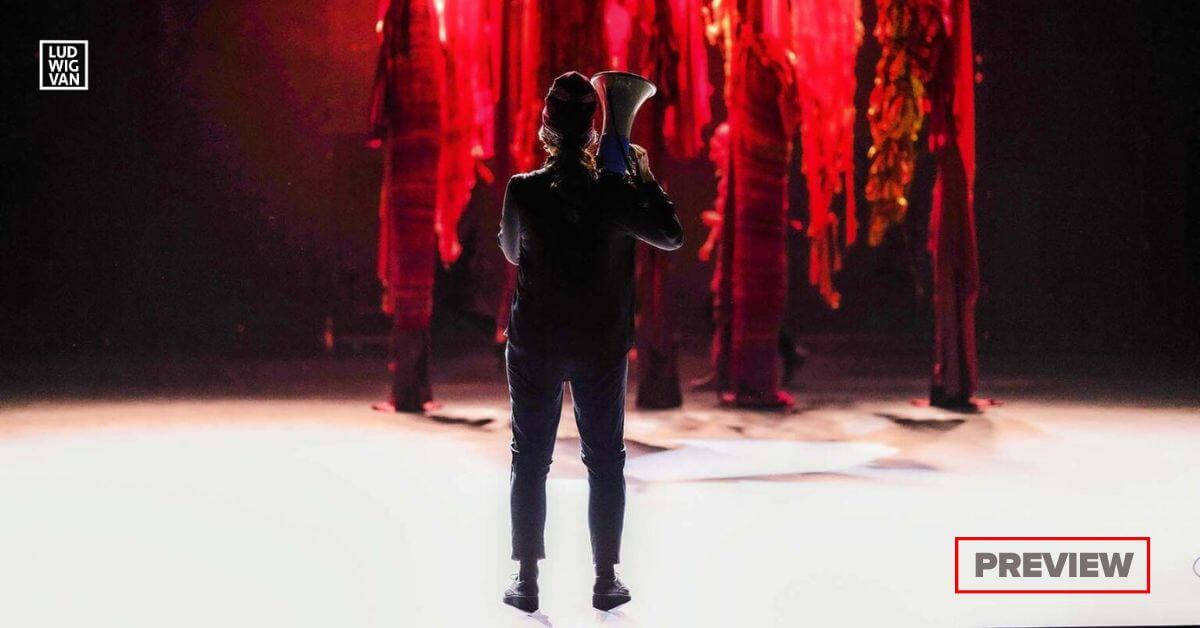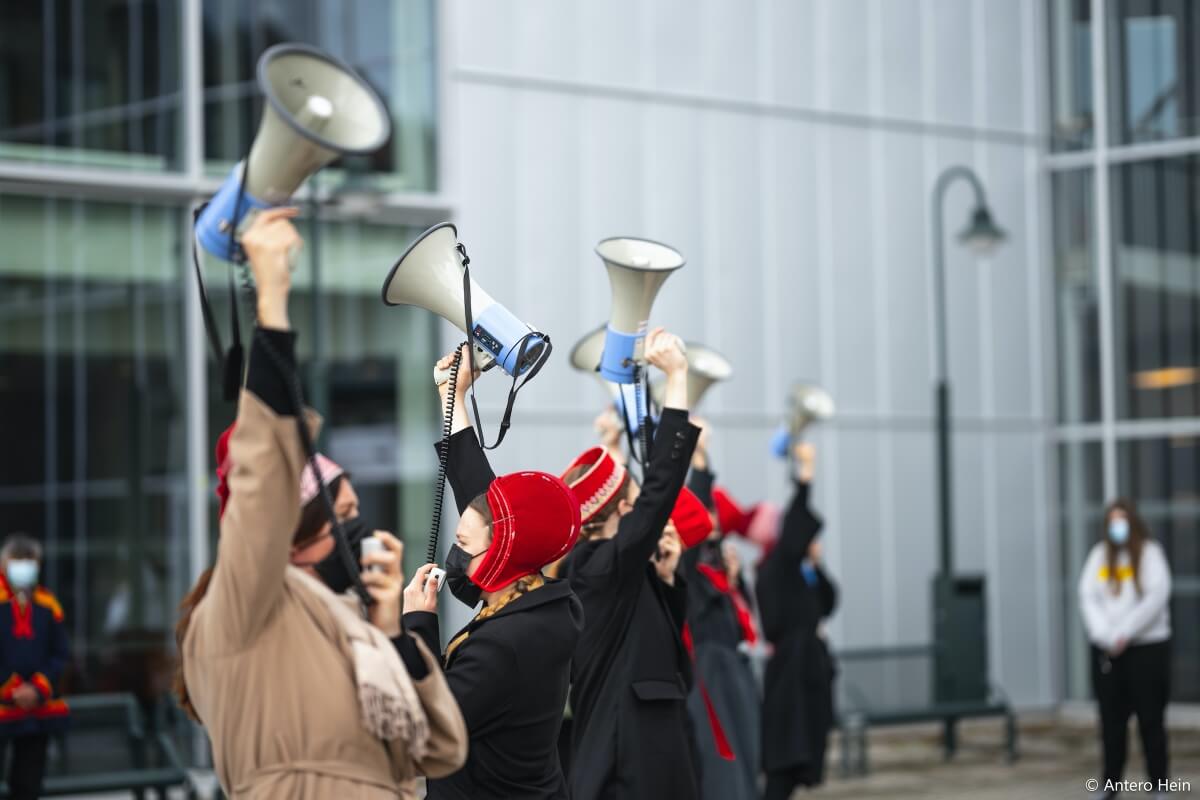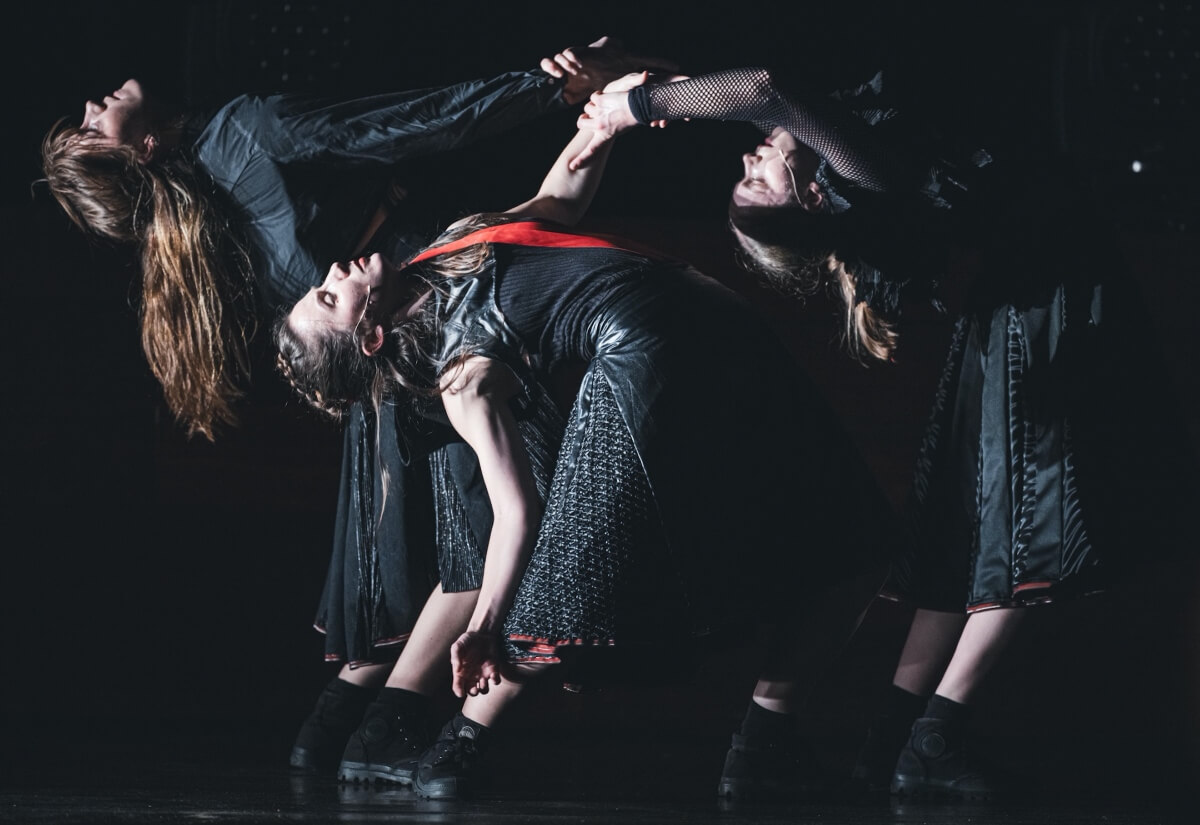
Vástádus eana — The Answer Is Land, takes the stage at the Fleck Dance Theatre on March 6 and 7, but the performance begins outside in Ontario Square. It underscores the work’s message about reclamation of Sámi culture and spirituality, and the environment through activism.
Ontario Square is the open courtyard in front of 235 Queens Quay West, planted with trees, and with seating, weather permitting. The performance is part of Harbourfront’s Torque Dance series.
“We’re honoured to present this significant work, coming off its international tour, and now here in Canada,” says Nathalie Bonjour, Director, Performing Arts at Harbourfront Centre in a statement. “This piece seeks to amplify the long-repressed voices of the Sámi people, inviting audiences to participate in the performers’ healing and restorative journey.”

The Sámi People
The Sámi people were the original inhabitants of a region called Sápmi. Today, it stretches across northern regions of Norway, Sweden, Finland, and the Kola Peninsula of Russia. The Sámi languages are part of the Uralic family, which includes Hungarian, Finnish, and Estonian. It is believed they moved into the area from the Volga River region in Europe around 1500 to 2000 BC.
Sometime during the later periods of migration, a separate influx of Germanic-speaking peoples, the Norse people or Scandinavians, also began to settle through parts of the same region. After centuries of little to no contact between the two peoples, however, the Scandinavians began to aggressively colonize the northern regions from about the 18th century forward.
During the 19th century, they implemented forced assimilation programs that will sound familiar to North Americans, including residential school systems designed to remove their language and culture from society. Sámi language and culture was widely banned in schools.
The Work
Vástádus eana — The Answer Is Land combines a reclamation of a culture in artistic expression that is intertwined with a sense of the earth as a grounding element of all people. Community, kinship, and the relationship between humans and nature are underlying themes.
In it, seven women performers in traditional headwear embody the music, composed by Frode Fjellheim, and based on polyphonic yoiks, the traditional mountain songs of the Sámi.
The work is choreographed by Elle Sofe Sara. A native of Guovdageaidnu, Norway, her work often looks to reveal the overlooked aspects of Sámi culture and its unspoken rituals. She earned an MA in choreography from the Oslo Academy of Arts, with studies in dance at the LabanTrinity School in London, UK. A frequent collaborator with artists internationally, she is the co-founder of DÁIDDADÁLLU, a Sámi contemporary art collective.
Co-choreography is by Alexandra Wingate, with dramaturgy by Thomas Schaupp, costume design by Line Maher, set design by Elin Melberg and light design by Øystein Heitmann.
From the FTA—Festival TransAmériques in May 2023:
Composer Frode Fjellheim
If you’re a fan of the movie Frozen, you’ll have already heard the music of composer Frode Fjellheim.
Frode Fjellheim is a Southern Sámi, raised in Gausdal and Karasjok, and based today in Trondheim, Norway. He’s known as a yoiker and musician, probably best for his band Transjoik.
His the 2002 song “Eatnemen Vuelie” was developed into the musical number that opens the uber-popular Disney animated film.
Frode studied at the at Trondelag Music Conservatory, and as a composer, has become known for his choral works, including compositions for the Cantus folk choir Northern Lights album released on the Decca label in 2017. With his band, his music blends the haunting elements of yoik with jazz and ambient electronica. He’s written scores for theatre and film, and has received awards for his research into folk music.
The Yoik
“The music is based on the old Sámi tradition called yoik,” he says. As he explains, strictly speaking, a traditional performance of yoik is sung solo and a cappella. “It’s a tradition that is defined as a musical tradition, but it’s also a social tradition. So, what I am doing is taking some of the traditional yoiks and using them as a starting point for creating this music.”
Most of the music is performed live, with additional prerecorded sounds. The score is for vocals with some percussion. Fjellheim says two of the vocalists are traditional yoik singers, along with two traditional singers who are classically educated. The score is not written, but rehearsed live.
A couple of the new songs were inspired by traditional yoiks, while others use elements of the music to create a polyphonic work. He notes that it works together with the choreography, which is also inspired by tradition. Forde met with Elle Sofe Sara before the work began. “We worked quite closely,” he says. “I tried to understand what it’s about.”
Based on the ideas she gave him, Forde says he tried to find yoiks that were relevant, adding his own material to create the finished work.
A yoik is not a song as we tend to think of it in pop culture. “The tradition describes something,” he says, “you are yoiking something.” In other words, not yoiking about something. “It’s an act of creating.” He compares it to the creation of dance.
“It’s a bit difficult to explain, this tradition, because it’s very linked to different parts of the traditions.”

Sámi Culture
It’s modern performance, put simply, that expresses Sámi culture. “As a composer, there are elements of modernity in it, and contemporary styles,” he explains. “It has been a very special project.”
The performance combines story and conceptual material. “It’s also about the connections between people and nature,” he says. “It’s lifted up to a different level.”
Vástádus eana — The Answer Is Land is part of a music practice that focuses on similar issues. “Most of the music I do today has some link to Sámi music and culture. The reclamation of Sámi language and culture is part of a worldwide movement of indigenous peoples.
“We are going to change the world so it will be greener.”
Since its inception three years ago, the project has evolved and changed. “A lot of art can express things that it’s difficult to do in speech or written language,” he says.
“We created something special.”
There will be a Q&A after the performance on March 7, hosted by Nicole Inica Hamilton.
- Find tickets and more about the performances March 6 & 7 [HERE].
Are you looking to promote an event? Have a news tip? Need to know the best events happening this weekend? Send us a note.
#LUDWIGVAN
Get the daily arts news straight to your inbox.
Sign up for the Ludwig Van Toronto e-Blast! — local classical music and opera news straight to your inbox HERE.
- PREVIEW | SUMMER OPERA LYRIC THEATRE Presents Handel’s Xerxes, Mozart’s Idomeneo & Puccini’a La Boheme July 26 To August 4 - July 26, 2024
- PREVIEW | YENSA Festival V.2 Offers Black Flames Performances & Other Ways To Celebrate Black Women In Dance - July 25, 2024
- PREVIEW | Canadian Talent Conspicuous In The Met: Live In HD 2024-25 Season - July 25, 2024



